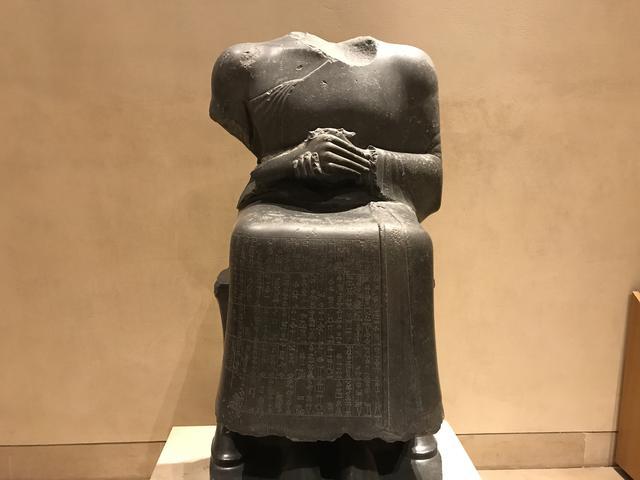Gudea, "colossal"

Gudea is represented life-size, sitting conventionally on a stool, with flared legs joined by two crossbars supporting the seat. The prince is barefoot, hands clasped as a sign of attention to the deity. He is dressed in the long princely mantle with a fringed edge, covering the left arm with one side (the other being brought under the right arm), then entering the neckline, forming folds. Among the many statues dedicated by Gudea, this work is of exceptional interest for the quality of the stone and the sculpture, as well as for the presence, on the knees of the prince, of a tablet bearing an engraved architect's plan . The tablet also hosts a stylus, a ruler and an inscription - unique in its length and content - which covers almost completely.
Gudea left us the longest inscriptions we knew in Sumerian, exalting his piety towards the gods in an ideal very different from the Akkadian militarism that preceded it. The inscription here consists of three hundred and sixty-eight boxes divided into nine columns. It starts in the back, then develops on the sides, it covers the entire seat and the bottom of the garment Gudea. The text begins with a list of regular offerings made to the statue of Gudea, as for a cult statue. It is indeed a "living statue", intended to replace the prince before his god for eternity, and responsible for transmitting his words, including the message that the Eninnu was built according to the rules of God and the laws of society.
© Tourblink